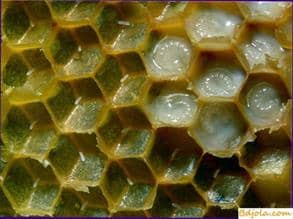
To always have quality honeycombs at hand, I use the building capabilities of bees. Since the flowering gardens in each family I place first one frame with a honeycomb, and with the growth of the family – two or three. I put them through two frames between honeycombs with an open brood. I cut the nest so that the bees densely sits all the frames. Four days later I check the set frames. I take out the fresh built up ones, and put two or three frames with a honeycomb in their place. And so it continues throughout the bribe from the gardens, sainfoin and buckwheat. During sunflower bloom, instead of nesting frames I give bees construction to increase the collection of wax and combat varroa.
The detuning of a large number of honeycombs does not affect honey production. With a good bribe, the family can rebuild the three frames in four days.
Thus, for a season I discard old honeycombs and receive from each family up to 2 kg of wax.
Палатка для осмотра пчел. Щавелевая кислота пчеловодство.
Beer lover's section